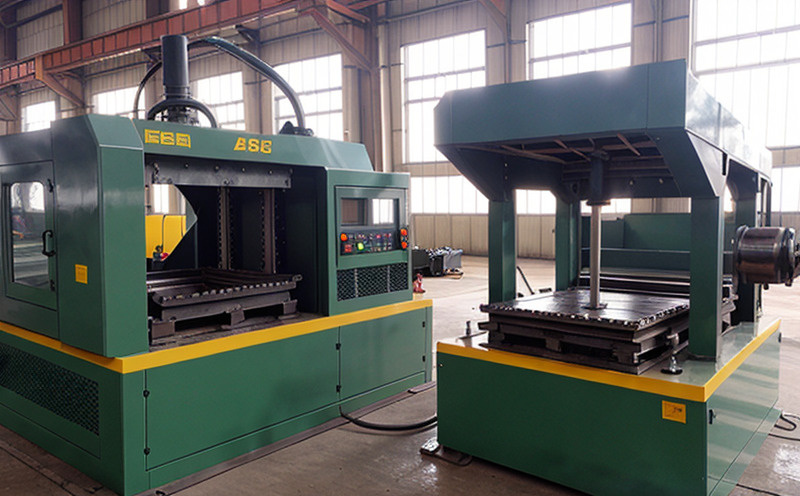ISO 4992 Radiographic Testing of Forged Products
The ISO 4992 standard provides a framework for ensuring the integrity and quality assurance of forged products through radiographic testing. This critical process is essential in industrial manufacturing sectors where safety, reliability, and compliance are paramount.
Forging involves shaping metal into desired shapes using heat and pressure. The resulting components must be free from internal defects that could compromise their performance under stress or load. Radiographic testing (RT) is a non-destructive testing method used to identify such flaws within the material structure of forged parts.
ISO 4992 specifies the requirements for radiographic examination of forgings and other similar products made by hot forming processes. It ensures that all aspects from test preparation, execution, interpretation, and documentation are carried out according to best practices recognized globally. This standard is particularly important in industries like aerospace, automotive, construction, and defense where component failure can have severe consequences.
The process involves positioning the part between a radioactive source (such as X-rays or gamma rays) and an imaging device. The radiation penetrates through the material, being absorbed more by areas with higher density such as cracks or inclusions. An image is captured on film or digital media which can then be analyzed for indications of imperfections.
For effective radiographic testing under ISO 4992 guidelines, proper preparation and execution are crucial. This includes selecting the appropriate radiation source based on the part geometry and thickness, ensuring adequate exposure conditions to achieve clear images while minimizing scatter, and employing suitable film or digital detectors capable of detecting minute defects.
After acquiring the radiographic image(s), it is subjected to detailed analysis by qualified personnel using established criteria outlined in ISO 4992. These criteria define acceptable levels of contrast and resolution, as well as rules for interpreting indications observed during testing.
The resulting report should document all relevant parameters including test setup details, film or detector characteristics, exposure conditions, and any identified flaws along with their classification according to the standard's grading system.
Adherence to ISO 4992 not only guarantees that forged components meet strict quality standards but also enhances safety by detecting potential weaknesses early in the production cycle. This leads to increased confidence in product reliability and durability, supporting continuous improvement efforts across various sectors relying heavily on metal fabrication processes.
Applied Standards
| Standard Number | Title of Standard | Description |
|---|---|---|
| ISO 4992:1986 | Radiographic examination of forgings and similar products made by hot forming processes | This standard specifies the requirements for radiographic examinations to ensure quality control in manufacturing processes. |
| ASTM E74-05(2012) | Standard Practice for Radiographic Examination of Forgings and Similar Products Made by Hot Forming Processes | American Society for Testing and Materials standard providing similar criteria to ISO 4992 but tailored specifically towards U.S. applications. |
| EN 1305:2007 | Radiographic examination of forgings - Requirements and methods | This European standard aligns closely with both ISO 4992 and ASTM E74-05(2012), offering additional regional nuances. |
| IEC 60803:2015 | Radiographic examination of forged components - Requirements, methods and guidelines for interpretation | An international standard from the International Electrotechnical Commission covering both forged parts and other similar structures. |
Scope and Methodology
The scope of ISO 4992 radiographic testing encompasses all aspects necessary to ensure the integrity and quality of forged products. This includes specifying the conditions under which tests should be conducted, detailing the equipment required for accurate imaging, defining acceptable limits for defect detection, and providing guidelines for reporting results.
When performing this type of inspection, it is important to consider several factors including the type of material being tested (aluminum alloys, steel, nickel-based superalloys), its thickness, and the specific defects one wishes to detect. Different materials may require different exposure settings due to variations in atomic number and density.
The methodology involves careful preparation before starting any test run. This includes calibrating equipment accurately, ensuring that all personnel involved possess appropriate qualifications, and preparing the specimen for optimal positioning relative to the radiation source. During the actual testing phase itself, precise control over exposure duration is essential to avoid underexposed or overexposed images which could obscure crucial details.
Post-processing involves reviewing each image frame meticulously looking out for any signs indicative of flaws within the structure such as porosity, cracks, lack of fusion, etc. Once identified, these defects must be categorized according to predefined scales set forth by ISO 4992 ensuring consistency across different laboratories performing similar tests.
Finally, comprehensive documentation summarizing all findings along with supporting evidence should be compiled into a final report available for review by stakeholders involved in the project lifecycle from design through manufacturing and quality assurance phases. This document serves as proof that stringent testing protocols were followed thereby upholding the expected standards of excellence demanded within industrial environments.
Eurolab Advantages
EuroLab offers unparalleled expertise in implementing ISO 4992 radiographic testing for forged products. With years of experience and cutting-edge facilities, we provide reliable assessments that meet international standards.
Our team comprises highly skilled professionals who understand the intricacies involved in this complex process. They stay updated with technological advancements ensuring our methods remain state-of-the-art. Our laboratory adheres strictly to all applicable regulations guaranteeing consistent results across multiple projects.
We offer customized solutions tailored specifically towards your unique requirements. Whether you need routine inspections or one-off evaluations, we can accommodate diverse needs efficiently. Additionally, EuroLab provides comprehensive training programs aimed at enhancing knowledge among personnel handling similar tasks in-house.





